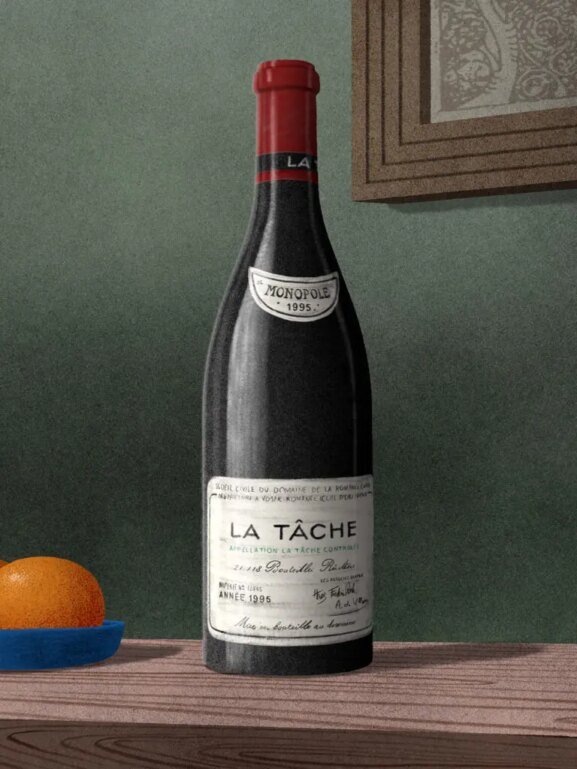Winemakers Opting Out of Geographical Indications
Since their earliest modern manifestations in the first half of the past century, geographical indications (GIs) have been instrumental in shaping people’s understanding of wine.
They provide drinkers with a level of confidence regarding the origin of grapes and adherence to safety standards. They are also strongly associated with the perception of quality: The more stringent the regulations and circumscribed within a geographical area, the more accurately they are thought to reflect a wine’s terroir expression.
Generic table wines like France’s vin de France and Italy’s vino da tavola, which instead offer producers considerable freedom, have traditionally been associated with more affordable and lower-quality options.
While somewhat accurate overall, such a simplistic, binary interpretation has been gradually losing its relevance. A growing number of winemakers around the world have strayed from the constraints of GIs in favor of more freedom and creativity in the production process.
“In the past, vin de France used to be a category dedicated to cheap wine, or maybe for natural wine,” says Anthony Aubert, winemaker and founder of no-appellation wine brand Aubert & Mathieu. “Today, we don’t care about the appellation anymore. I just want to do what I like—I don’t need any rules.”
Aubert’s winemaking approach, designed for a younger demographic, is highly dynamic. By avoiding the constraints of appellation rules, he believes he gains the flexibility to create wines precisely tailored to the preferences of his target audience.
“I source fruit locally within the Languedoc-Roussillon, but also from the Rhône and the South West to achieve the flavor profile that I need, and this isn’t allowed by appellations,” he says. “They also want winemakers to respect other criteria such as aging in oak. But people don’t want oaky wines anymore.”
Operating by his own set of rules enables Aubert and others like him to concentrate more on the grape variety, a factor he argues is most key in influencing people’s decisions when selecting a bottle of wine. “It’s certainly good to know where the wine comes from, but some drinkers can’t even find France on the map, let alone the Languedoc or small appellations like Corbiere or Minervois,” he says. “The grape variety, on the other hand, is super important.”
Rejecting Complexity
The world’s countless GIs continue to develop progressively intricate and nuanced regulatory frameworks. For example, several European denominations are implementing additional styles and subzones. Deciphering such complexities poses an increasingly difficult challenge for consumers.
In recent years, Jerez’s Consejo Regulador announced a significant regulatory overhaul with the goal of elevating Sherry to a more premium status. This transformation included the integration of new terms, such as pago and fino viejo. It also designated new styles, including unfortified Sherry, along with new grape varieties. Meanwhile, last February, Italy’s Franciacorta disclosed its decision to divide its approximately 7,400 acres of vineyards (an area slightly larger than Manhattan) into an astonishing 134 subzones.

“All these zoning efforts are creating more and more confusion with drinkers,” says Lisa Anselmi, the third-generation co-owner of Veneto’s Anselmi winery. “They’re often just a ploy to give an impression of premiumization of the denomination. But who’s really going to learn all of them? Soave, for instance, has 33 UGA [subzones], when it’s already hard enough for people to know the difference between Soave and Soave Classico.”
In 1998, Anselmi’s father made the decision to disassociate his wines from the Soave denomination of origin, which they had previously carried. The choice was a response to the negative reputation associated with the GI, and a deliberate effort to distance themselves from it.
“Whatever Barolo you buy, you know it’s going to be at least good,” Anselmi explains. “But here, unless you know the producer, the DOC is no guarantee of quality: 80% of our land is controlled by coops who rely on obsolete training methods and high yields. There’s no logic in that.”

Brand Power
Overall, renouncing the denomination has proven to be a successful move for the Anselmi family, bolstered by the winery’s longstanding reputation in the area. For less established producers, however, relinquishing an appellation can present significant hurdles.
“Obviously, we cannot take advantage of the promotional actions organized by the consortia in our area,” says Katharina Börner, the CEO of Ômina Romana. Established in 2007 near Rome, within the production zone of the Roma DOC, the winery chose to forgo the use of GIs from the outset. This decision stemmed from the desire to create “super Roman” wines (a nod to Tuscany’s Super Tuscans) incorporating international varieties like Cabernet Sauvignon, Merlot, Viognier and Chardonnay, a choice not permitted within the constraints of local appellations.
“More experienced wine drinkers, to whom Ômina Romana is addressed, are aware that denominations in Italy are not quality classification systems, but rather a tool for interpreting an idea of typicality linked to the traditions of a given territory,” she explains. “In Italy… there are many quality wines, rewarded by both Italian and international critics, that prefer to go outside the GIs… These are legitimate choices that meet individual production philosophies.”

While playing outside of GIs may pose challenges for new wineries, it brings significant benefits, too. It grants winemakers complete control in shaping their own identity and operations, allowing them to establish a brand from the ground up and take full charge of their communication strategy.
At around $5,000 a pop for some of its vintages, Loic Pasquet’s Liber Pater is one of the most noteworthy and successful examples of such an approach. Since the first expression’s release in 2006, Pasquet’s wines have proved some of the world’s most expensive—a remarkable feat for a Bordelais vigneron who has firmly rejected Bordeaux’s intricate appellation systems.
“You don’t need appellations today,” he says. “This wasn’t the case before the internet. Back then, you did need appellations, critics and supermarkets. But now, anyone can be on Instagram, Facebook and LinkedIn, connecting directly with their clients, and explaining what they’re all about.”
Especially in today’s increasingly crowded wine world, where the array of wine styles and regions accessible to drinkers is more extensive than ever, “brands are a lot more important,” says Pasquet.
Certainly, the once common belief that wines with a GI are good and those with no origin label are subpar no longer holds true.
“Appellations were created to protect vignerons, but also to respect a special place, a climate and a viticultural tradition, while vin de France used to be just unassuming wines,” says Pasquet. “That has totally changed now. Appellations make industrial wine—good vignerons make vin de France.”
More Appellation Coverage

From the Shop
Find Your Wine a Home
Our selection of white wine glasses is the best way to enjoy the wine’s subtle aromas and bright flavors.
Published: July 10, 2024

